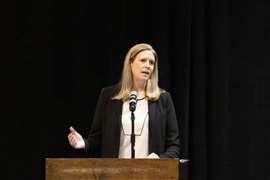A disastrous year
18 January 2018

Harvey. Irma. Maria. The California wildfires. 2017 was a year where natural disasters affected Americans on an enormous scale. People lost homes and businesses and personal property, and in the worst cases, lives. There’s simply no denying that 2017 was a tough year for a lot of people.
From an insurance standpoint, 2017 was the year of the “mega loss,” the effects of which we can’t accurately quantify yet. According to a report called Marketplace Realities 2018, from Willis Towers Watson (WTW), a leading global advisory, broking and solutions company, total loss estimates from these events range widely, from around $50 billion to $200 billion. That said, most experts, according to WTW, think the total will fall somewhere around $100 billion.
Obviously, that’s a huge number, and it will definitely affect insurance rates in 2018. The big question is: How significantly will they be affected? According to WTW, “The long soft market for commercial property insurance could be over, at least temporarily.” It’s important to remember, though, that insurance market forecasting is a lot like weather forecasting: until it arrives, we can’t know its true impact. Experts, really, are just guessing.
What can you do?
NBIS’s Executive Vice President of Underwriting Jim Jinhong cautions the real details of the market’s status will come after January 1, 2018, when each of the insurance carriers have completed their treaties. “Right now,” he said, “most markets are positioning for change without knowing all the details of that change. It’s just too soon to know.”
Most underwriters agree that the devastating and catastrophic events of 2017 will impact both personal and commercial insurance rates.
“Despite the damage,” WTW reported, “the marketplace has been very stable so far. We do, however, expect a change in the marketplace after insurers have a chance to estimate their ultimate losses.”
Obviously, that’s going to take some time. So rather than sitting around and waiting to see what happens, here are two specific things you can think about to put yourself in the best possible position when it comes time to obtain your next insurance quote.
Operations that can demonstrate active safety and risk-management protocols are better positioned to mitigate potential impacts of a hardening insurance marketplace.
We all know that safety and risk management is important, but in times where the market is getting ready to shift, like right now, it becomes even more important. Programs like NBIS’s Online Safety and Health Training and Online Driver Training become tools that don’t just make drivers and employees safer and more educated, which is always the overarching goal, but they can also help offset pricing. Safer risks are better risk.
It’s just that simple. Which brings me to my second point:
Operations with knowledgeable insurance agents oftentimes get favorable terms.
The insurance agent who prepares
your renewal submission and documents your risk-management efforts is serving you in the best possible way. Why? Because a standard submission sent to carriers for pricing will receive standard rates per current market conditions. A tailored submission, however, ripe with details of your risk-prevention efforts, will be considered differently by insurers. Also, good agents develop high levels of credibility with market partners, and because of those relationships, underwriters often feel comfortable that they are getting accurate, complete and current information they can then use to build a competitive quote. Safety, risk management, knowledge, relationships, understanding – it all factors into what the underwriter puts into her quote.And it all matters.
Better risk management
Risk management efforts – or maybe I should say becoming a better risk – are more important than ever as we move into 2018, since it’s one of the only pricing factors policyholders can truly control. Essentially, risk management efforts come from three main sources: inside your company by way of your safety department; from your agent; and from your insurance carrier.
The people inside your company’s safety department play a pivotal role because they’re on the front lines; they’re the folks looking at and analyzing each near miss for ways to use what they’ve learned to improve. They look at risk directly, every day, and find practical, innovative, realistic ways to avoid it.
Your agent, like your safety department, can provide tools your company can use to become safer. Perhaps they can help you stage a mock DOT audit or even point you to safety plan development resources. Your agent is there to help you in any way they can, so it’s good practice to ask often what they can do to help you become a better risk and enjoy more favorable pricing.
Finally, your insurance company should also be doing all they can to help you manage your risk. At NBIS, we employ a number of experts who are involved in influencing OSHA standards through work on ANSI committees like B30.5. We not only train our claims staff in the details and specifics of OSHA and ANSI, but we also train our defense attorneys – and then we share all that risk management knowledge with our policyholders. In fact, NBIS insureds are leveraging many of the risk solutions we offer and are ahead of the game, since the underwriting, risk management and claims teams communicate regularly with agents and insureds regarding the specific details of their account position.
Value assessment
In the long run, being a better risk helps everyone. 2018 is the right time to ask a lot of hard questions about who’s got your back from a risk-management standpoint. Ask yourself who’s truly helping you out and if you’re getting all the risk management value you can get. After all, especially in light of an uncertain market forecast, there’s real money on the line.






